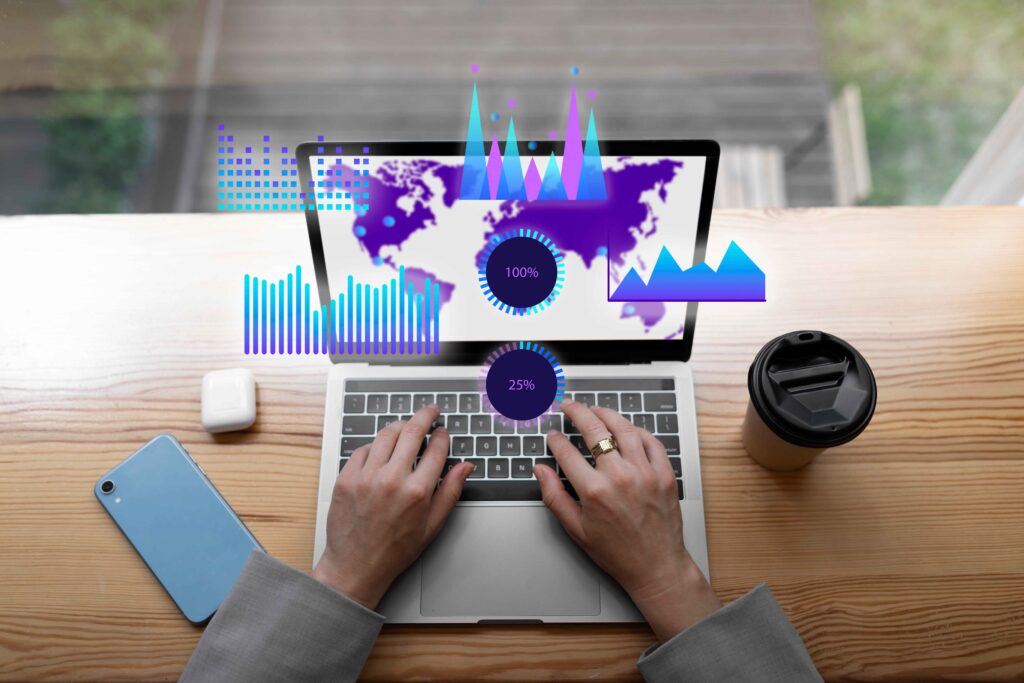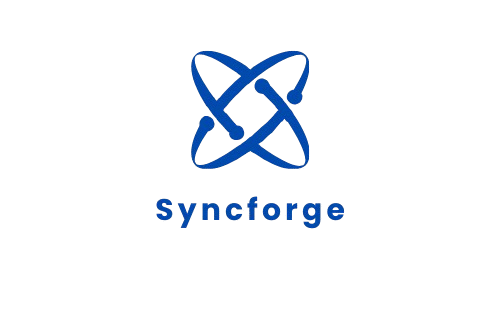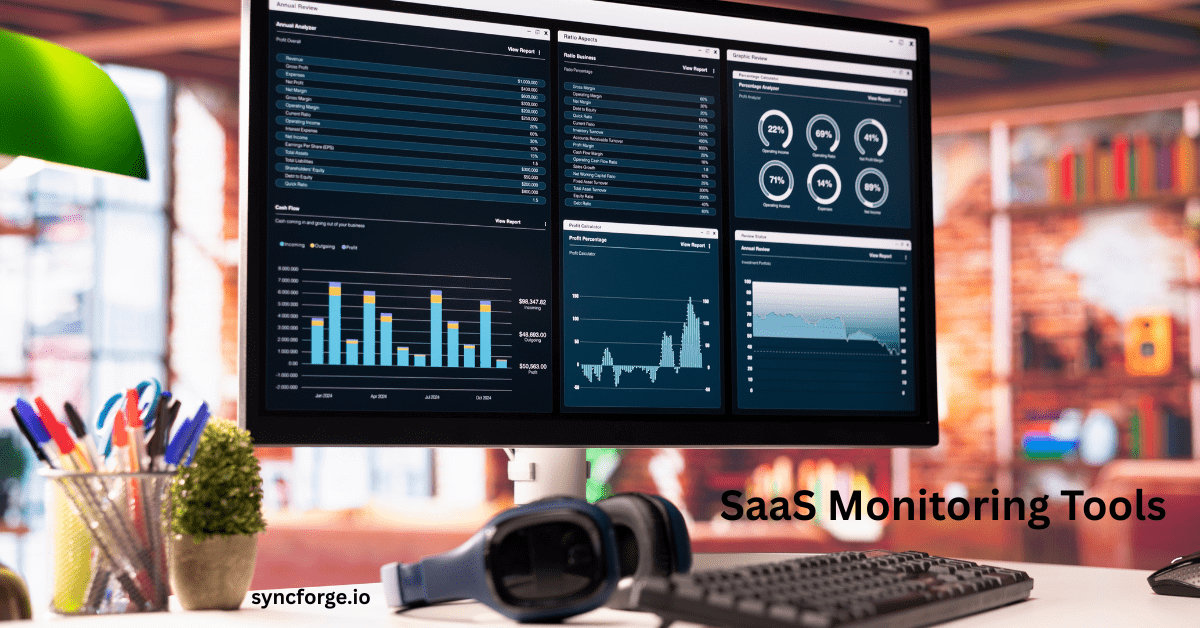SaaS Management Software: 5 Smart Steps for Successful Execution

SaaS Management Software: The Complete Guide for 2025
Software backs every modern-day digital business as a Service (SaaS). From baby businesses to established enterprises, companies are dependent on multiple SaaS applications for even basic needs. Such as CRM, analytics, accounting, and HR. Your business looks like a busy airport where planes( SaaS apps) are coming and going but without traffic control, airport system turns chaotic. Similarly, SaaS applications have become the backbone of business, but without a proper structure, they become unmanageable.
No business is using just one SaaS tool; all are operating multiple tools at a time, and the question arises: How do you manage all these SaaS applications efficiently, securely, and cost-effectively? And SaaS Management Software (SMS) is the one and only true answer to this question.
SMS gives the charge in your hand by tracking every app and making sure that the apps are secured and optimized. In 2025, SMS is no longer optional; it has shifted from “nice to have” to “must have.”
This blog will cover the following aspects:
- SaaS management software and its importance in 2025
- Its key features and benefits
- Top SaaS management platforms
- Best practices for its implementation
Let’s dive in.
What is SaaS Management Software?
SaaS management software functions as a control room for your hundreds of SaaS applications by helping companies to monitor, manage, and control all of them. Instead of juggling spreadsheets and manually tracking licenses, usage, and renewal of all the applications, SMS facilitates IT teams and finance managers with a single centralized dashboard where they can:
- Check all ongoing subscriptions and their deadlines
- Automate application renewal and approval
- Who is using those apps and how often, and what is it costing
- Security and compliance of those applications
For example, if your finance team buys an analytical tool and the HR team subscribes to payroll, and individual employees sign up for design tools. Soon, 50 different apps will be operating in your company, and many will overlap. SMS spy on everything, keep you updated about it, and help you decide what stays and what goes. Concisely, it brings structure to SaaS sprawl.
Why SaaS Management Software Matters
Gartner suggests that the SaaS market is expected to exceed $200 billion by 2025. Even a mid-sized company is operating 100 SaaS apps on average. The growth brings waste and risk with it. Without SaaS management software, companies are on verge of falling into these pitfalls:
- Waste spent: Without SMS, companies could lose hundreds of thousands of dollars per year, as studies suggest that up to 30% of licenses go unused, leading to massive wasted spend. Buying tools more than you need drains your budget. For instance, you have bought 50 Zoom licenses, but only 30 employees have logged in; the remaining 20 licenses go unused.
- Shadow IT is the usage of IT tools within an organization without notifying the IT teams. It leads to increased security risks, data vulnerabilities, and additional expenses for the organization.
- Compliance Challenges: It is a major challenge that thrives in absence of SaaS management software, as it is very difficult to manually track GDPR, HIPAA, or SOC2 compliance across multiple applications. Lack of visibility, control, and automation are the most common challenges.
- Operational Inefficiencies: Without SMS, organizations do not have any control over their software portfolio, which leads to excessive spending. Two teams using two different project management tools lead to inefficiency. Moreover, auto-renewals of applications lock you into unwanted and unnecessary contracts.
SaaS management software provides a solution for all these challenges by giving you clarity, control, and cost savings.
Key Features of SaaS Management Software
SMS hands over the charge of your software stack, security, and cost to you. Its core features include:
Application Discovery
It provides you with a centralized dashboard where you can monitor all the SaaS applications operating under your organization. It gives IT teams full control over the Software environment and ensures that no risky apps go unnoticed. It also identifies shadow IT. It helps you to spot duplication and facilitates your real-time usage, spending, and renewals analytics.
License Tracking& Optimization
SaaS management software notifies you before renewing any subscription and allows you to revise your purchase. It tracks license allocations and secures you from any legal issues by detecting expired or unmonitored licenses.
Spend Management
It keeps you updated about your organization’s spending on every single tool and highlights unused or underused licenses to reconsider. It prevents revenue wastage.
Security & Compliance
Software management system highlights flag applications that are not expected to meet global compliance standards, i.e., GDPR, HIPAA. It ensures that software must align with best security practices to protect the company from any legal inconvenience.
Automated workflows
It put HR and IT teams at ease by saving their hours of manual work and effort, and allowed them to concentrate more on complex and creative issues. It automates repetitive tasks and instantly assigns the right tools to new employees, and immediately revokes access from those who have left. It automates onboarding and offboarding workflows simultaneously.
Integration Capabilities
It creates a unified ecosystem where data flows smoothly across all platforms, such as HR systems and IT systems platforms, avoiding the need for multiple logins.
Benefits of Using SaaS Management Software
SaaS management software is known for its both financial and operational benefits.
- Cost savings are the biggest advantage of SaaS management software. It cuts your costs up to 30% by identifying duplicate apps and reclaiming unused licenses, which were draining your budget.
- It improved the security of your company by immediately revoking access from ex-employees by removing their accounts, stopping shadow apps, and enforcing compliance.
- Software management systems facilitate organizations with Efficiency gains by automating renewal approval and onboarding.
- Centralized visibility allows teams to see and track every SaaS application in one dashboard instead of getting exhausted by scattered spreadsheets.
- It ensures better decision-making through data-driven insights.
Top SaaS Management Software Platforms in 2025
One must choose SaaS management software depending on their company size, IT maturity, and primary concerns such as automation, security, and cost control. Small businesses are usually looking for ease of use, whereas enterprises aim for integration and compliance. Below are the leading platforms of 2025 with their specialities:
| Platform | Best For | Key Strengths |
| BetterCloud | IT teams | Workflow automation, security enforcement |
| Zylo | Finance and IT experts | Spend tracking, SaaS visibility |
| Cleanshelf (by LeanIX) | Enterprises | License optimization, cost reduction |
| Torii | Mid-size businesses | App discovery, automation |
| Productiv | Large organizations | Usage analytics, renewal insights |
Best Practices for Implementing SaaS Management Software
You cannot be fully relaxed after buying an effective SaaS management system for your company; it is only half done. Ultimate success depends upon how neatly you implement it. You should stick to the following practices for optimal results:
Audit your current SaaS ecosystem
First of all, make a list of all SaaS apps that are being used in your company. Insert all the data, including the number of users, contract details, renewal dates, etc. It would help you find out tools that are idle and still costing you money.
Involve IT, Finance, and Procurement teams.
SaaS management software is designed for various functions and addresses different pain points, including compliance, cost, and security, so it is relevant for all the teams, including IT, finance, and procurement. The IT team checks security and integrations, whereas the finance team evaluates if costs align with the budget, and procurement is responsible for handling contracts and vendor negotiations.
Collaboration ensures that no risk goes unnoticed. If something has been overlooked by one team other team could point it out.
Automate renewals and approvals
Take advantage of its automation features to schedule contract renewals, onboarding, and offboarding of employees. So every operation is timely and smooth without the pressure of any deadlines or dates to remember. It automatically revokes and assigns access to ex- and newly joined employees, respectively.
Regularly review app usage
To get perfection and precision, schedule quarterly or bi-annual revisions to analyze underused or duplicated apps and then eliminate them. It will save your money and enhance efficiency.
Educate employees
Educate your teams on strict governance policies of SaaS, Shadow IT, and the risks that it can bring to your company. Boost your employees’ confidence that they can request for desired tools through proper channels instead of buying on their own.
SaaS Management Software Trends in 2025

SaaS Management Software Trends in 2025
Success belongs to those who stay ahead of time and keep updating themselves according to the modern-day trends.
- AI-driven optimization: Get your hands on the software that predicts license usage and recommends cost-saving strategies.
- Tighter security: In SaaS, security is non-negotiable. Pick SMS tools that align more tightly with security models.
- SMB adoption: It is a reasonable option for small or medium-sized businesses to employ advanced technologies in their day-to-day operations to secure a competitive edge. It has made SMS accessible to even smaller companies.
- Integration-first approach: Make sure that it can seamlessly fit into daily operations
Conclusion:
In the modern-day SaaS landscape, skipping on SaaS management seems like putting your money and security on stake. SaaS management software is no longer optional- it’s essential to survive in such a crowded SaaS market.
Companies are optimizing their growth, revenue, and security with minimal effort because SMS is getting their work done and putting them at ease.
FAQs
Is SaaS management Software also a must for small companies?
Any company employing 20 or more SaaS applications should use it.
Are SaaS management and SaaS monitoring the same?
No, SaaS management focuses on your spend, regulation, and usage, whereas SaaS monitoring solely tracks your app performance.
How does SMS reduce your expenses?
It identifies unused licenses and duplicate apps and helps to eliminate them.
What is shadow IT, and how can it harm your company?
Shadow IT is when employees buy SaaS tools without permission from IT teams. It may lead to legal problems for your company and overrun your budget due to untracked costs.
What is the most important thing to consider while buying SMS?
Your company size and priorities should be considered while purchasing the right software for your company.
CTA: Close the door for wasted SaaS spend and take charge of your SaaS applications today with SaaS management Software. Learn more about SaaS on Syncforge.




